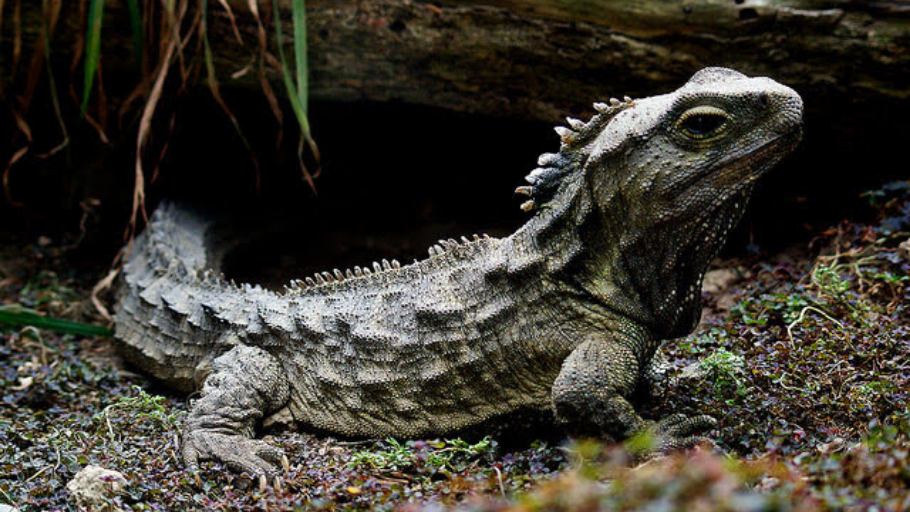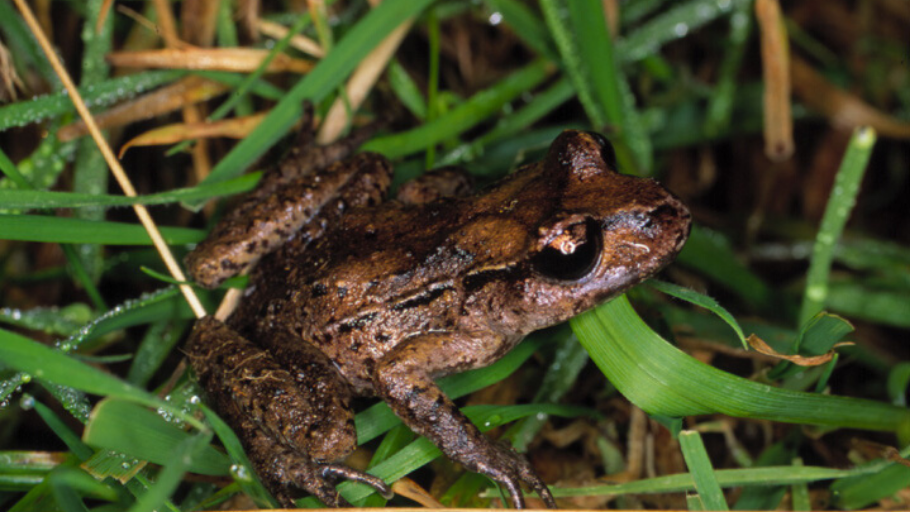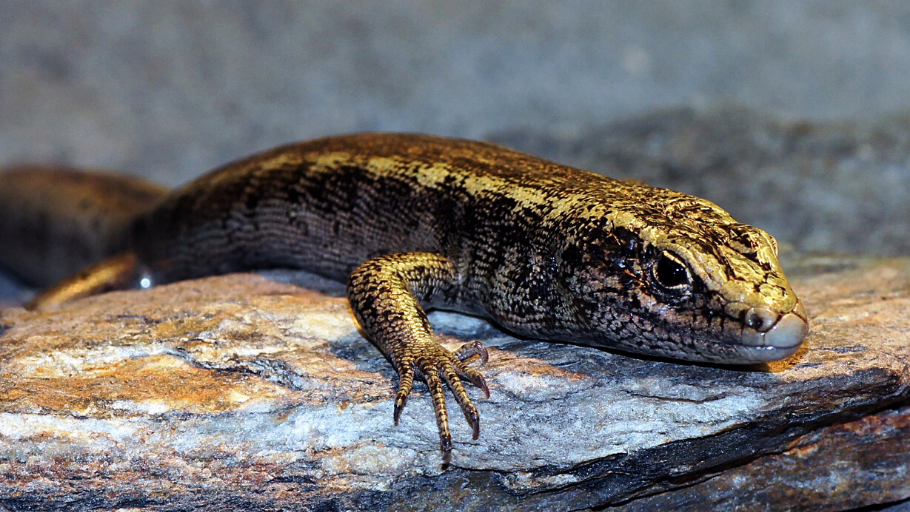ON THIS PAGE
How are they monitored?
There is no ‘one size fits all’ method for monitoring herpetofauna. Much depends on their habitat (e.g. forests, alpine zones) and species behaviour (e.g. native frogs are nocturnal). They are all protected species and you must not touch or handle them without a permit.

DOC’s methods for monitoring herpetofauna include the use of artificial retreats for lizards (objects such as sticks or small wooden boxes are placed in their habitat to attract them), timed searches (searching within a fixed time period to record a sample size) and pitfall traps (a small container is used to trap an insect or invertebrate).
DOC provides Amphibian and Reptile Distribution Scheme (ARDS) cards to record reptile and frog sightings. Anyone can use these cards: simply fill out one card for each new day or location and then post or email the cards to DOC.
Native frogs/pepeketua
- Are small and nocturnal
- Part of an ancient and primitive group of frogs, stretching back 70 million years
- Don’t croak/call (unusual for frogs)
- There are four native species: three are terrestrial, one is semi-aquatic and lives on stream banks.
| Native species | Where to find it |
| Hochstetter’s frog (vulnerable) | Upper half of the North Island (semi-aquatic) |
| Archey’s frog (critically endangered) | Coromandel and Whareorino in the Waikato region |
| Hamilton’s frog (critically endangered and possibly the world’s rarest frog) | Stephens Island, Marlborough Sounds |
| Maud Island frog (endangered) | Maud Island, Marlborough Sounds |
There are also three introduced frog species: the Brown Tree frog, the Southern Bell frog, and the Green and Golden Bell frog.
How to find and approach them:
Frogs NZ has a useful guide to identify frogs in NZ (native and non-native). If you spot a frog, do not touch it (they have sensitive skin). Instead, take a photo and make a note of its appearance, habitat and location. Next, contact your nearest DOC office.

Native lizards/ngārara
- Skinks and geckos are our only native lizards, with many species (about 40 species of gecko and about 60 species of skink). All are endemic to NZ.
- Skinks have tight skin, shiny scales and a narrow head; geckos have a broad head, definite neck and smooth scales (also, geckos cannot blink).
- Favour moist areas and can be found in vegetation, under rocks or in logs, including gardens in urban areas.
- Regarded as ancient guardians or kaitiaki (caretakers) for Māori.

How to find and approach them:
- Use binoculars (daytime) or a torch (nighttime).
- Don’t pick them up or remove them from a site (they are easily stressed and also a handling permit is required).
- Don’t lift rocks to find them (they might get squashed).
- If you spot one, take a photo if you can and make a note of its appearance, habitat and location.
Tuatara
- Unique to NZ and our largest reptile (they are not lizards).
- From an ancient family that stretches back to the dinosaur age (250 million years), but they continue to evolve and adapt.
- Under threat on islands inhabited by rats, cats and stoats.
- Live in several eco-sanctuaries on mainland NZ and on dozens of predator-free offshore islands. Classed as ‘relict’ with less than 10% of the original population, numbers are relatively stable with about 20,000 mature tuatara.
- DOC approval is needed to handle or move tuatara, which means they are only monitored by DOC staff or trained volunteers with permits working at sanctuaries or on offshore islands. Read the DOC information on tuatara captive management to find out more.
- To protect tuatara, obey ‘no landing’ rules and always check your belongings before visiting offshore islands or eco-sanctuaries where they are present to avoid introducing mice or rats.
How to encourage frogs, lizards and tuatara on your property
- Mulch your garden, provide plenty of native vegetation, and create rockeries (read our page on creating a lizard-friendly garden)
- Don’t own a cat and discourage visits from neighbourhood cats if you can
- Control rats and mice
- Limit pesticides and herbicides.

